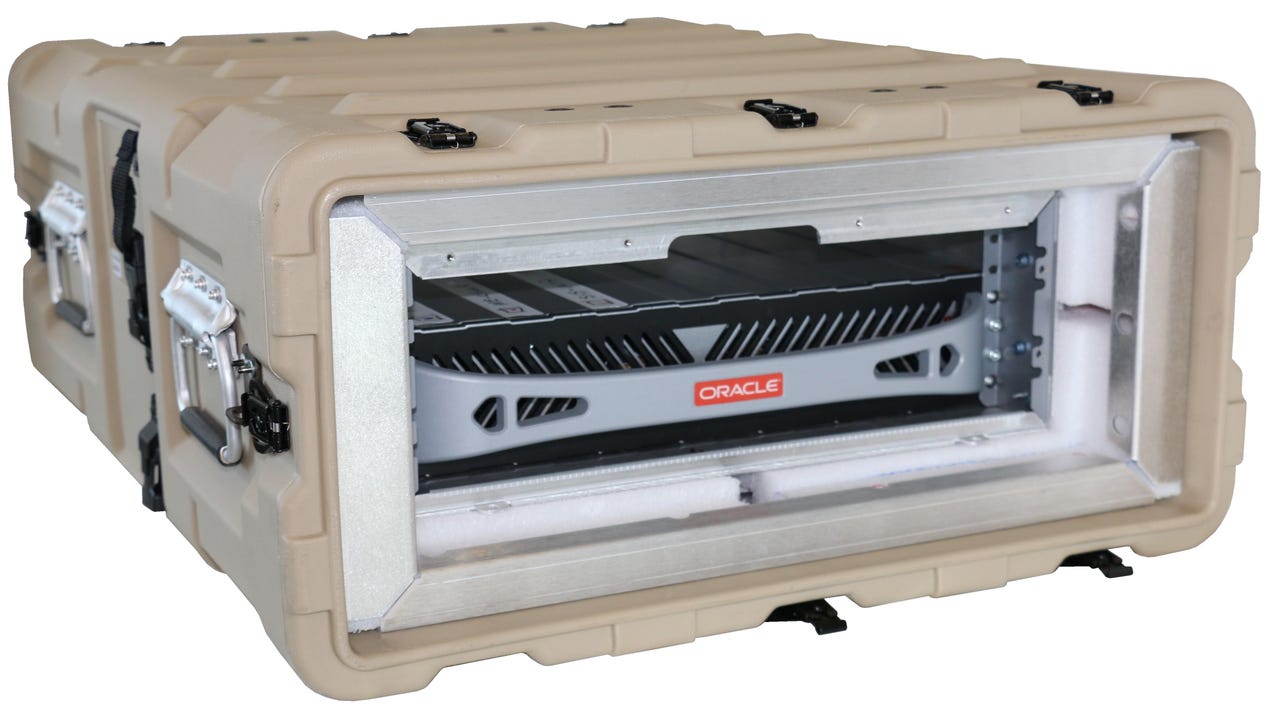Oracle expands hybrid cloud options with Roving Edge Devices


Cloud
Oracle on Tuesday is rolling out the latest addition to its hybrid cloud portfolio -- a new piece of hardware that brings core infrastructure services to remote areas. The new Roving Edge Device (RED) offers scalable server nodes in a ruggedized and portable box. It's designed for customers that want to leverage their data from places like an oil tanker at sea, or a three-week music festival in the middle of the desert.
The devices are effectively a mobile extension of a customer's Oracle Cloud Infrastructure (OCI) environment. REDs can run as a single node or in clusters of five to 15 nodes. The hardware inside a RED device includes 40 CPUs, an Nvidia T4 GPU, 512 GB RAM and 61 TB of storage. The devices start at $160 per node per day.
With a RED device, a customer should be able to run cloud applications and workloads in the field, including machine learning inference, real-time data integration and replication, augmented analytics and query-intensive data warehouses.
A customer can order a RED from the Oracle Cloud console, provision it -- adding VMs and object storage from the console -- and have it shipped. Even in remote areas where connectivity is an issue, customers can use the RED to connect to local sensors and execute applications.
There are some clear use cases for the RED devices, such as in the oil and gas industry, where organizations may currently be relying on bespoke servers. And Oracle has already signed up the US military as an early customer.
The devices should also facilitate new use cases for cloud applications, Ross Brown, VP for Oracle Cloud Infrastructure, said to ZDNet. Customers, he said, "are coming to us with things like 5G-connected applications where processing on local makes a lot of sense. This notion of high-speed data collection and high-speed data capture in a remote metro area, across a city or whatnot, these become good use cases for" the RED.
While Oracle's cloud infrastructure business still trails far behind Amazon Web Services, Microsoft Azure and Google, it's picking up momentum. Oracle landed some major customers in 2020, including Zoom.
The database giant plans to catch up in the cloud in part by engineering hardware purpose-built for enterprise applications to run in the cloud -- RED devices are an example of that, Brown said.
Last year, Oracle expanded its hybrid cloud portfolio with Dedicated Region Cloud@Customer -- a fully-managed service brings all of Oracle's public cloud services directly to a customer data center. Its hybrid offerings also include Oracle Exadata Cloud@Customer and Oracle VMware Cloud Solution.
Meanwhile, the company currently has 29 Oracle Cloud regions with plans to have 36 live by the mid-2021.